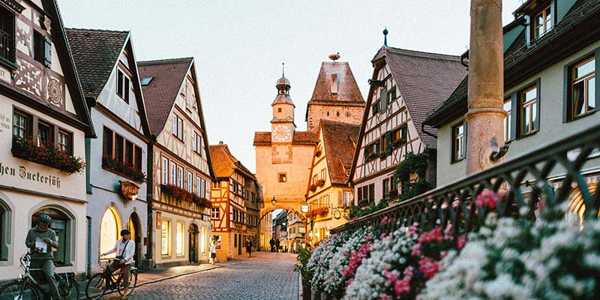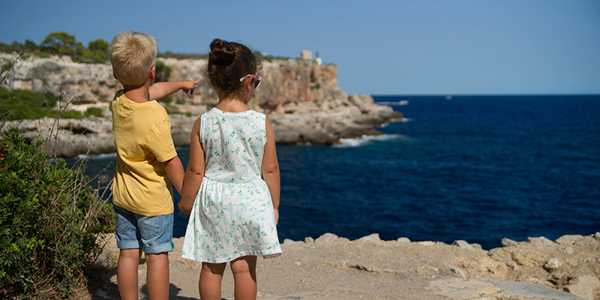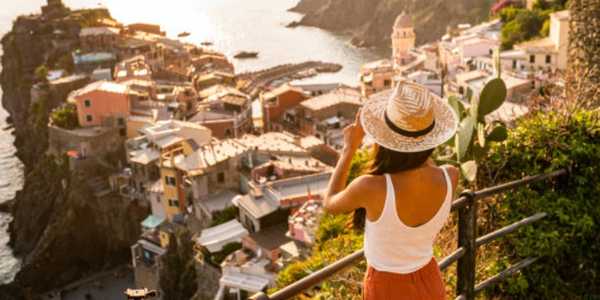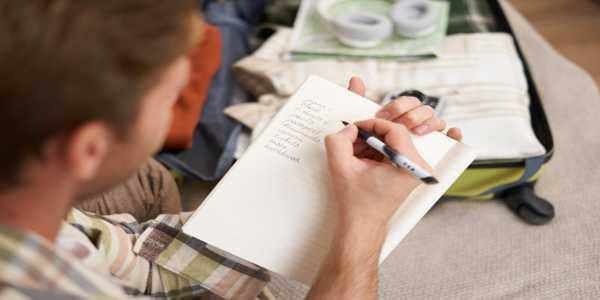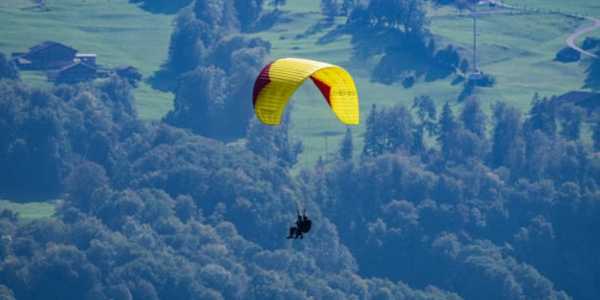14 Best Christmas Market Tours And Activities In Europe 2025-2026
If December had a heartbeat, you'd hear it in Europe's market squares. Lanterns glow, choirs rise, spices drift through the cold. This isn't just shopping. It's memory-making — and the reason Christmas market travel continues to draw people back year after year.
What Makes Europe’s Markets Feel Different?
A market is easy to describe: wooden stalls, spiced wine, and handmade crafts. But what makes festive European travel feel singular is texture — the sound of a brass quartet beneath cathedral spires, the clack of skates on a pop-up rink, the moment a child sees a 60-foot spruce pulse with light. It's the way centuries-old cities turn their oldest squares into living rooms.
If you're debating holiday market tours versus going solo, the difference isn't between "touristy" and "authentic." It's how you want to engage. Market experiences are layered, featuring food traditions, craft lineages, carols, regional folklore, charity stalls run by local guilds, nightly concerts, and museum late hours that align with market timings. The deeper you go, the more those layers show.
Deep-Dive Germany: Tradition, Craft, And Comfort Food
No country has shaped Christmas market travel more than Germany. Beyond the famous names (Nuremberg, Dresden, Cologne), what makes German markets compelling is the craft discipline behind everything you touch.
Gingerbread, But Serious
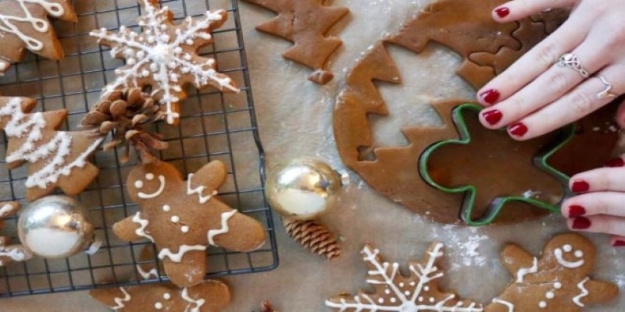
Nuremberg Lebkuchen isn't just a cookie; bakers hold protected recipes, balancing honey, nuts, and spice blends that go back centuries. Many stalls proudly display their ingredient lists, and you'll taste the difference between glaze, chocolate, and sugar-dusted finishes.
Woodcraft You’ll Actually Keep
The Erzgebirge (Ore Mountains) tradition shows up in pyramids that gently twirl from candle heat, Räuchermännchen (incense smokers), and delicate ornaments. Look for finely sanded edges and a natural wood scent — a hallmark of quality that lasts through the season.
Sausage Science
The “Rostbratwurst” from Nuremberg (small, smoky, three to a roll with mustard) contrasts with the longer, juicier Thuringian styles. These are not interchangeable; locals will happily explain why.
Chocolate That Snaps
In Cologne, the cathedral backdrop is breathtaking, but the chocolate artisans inside the red-canopy stalls will teach you more about tempering, gloss, and a clean “snap” than you expect from a tourist stop.
Why this matters for holiday market tours: when a guide is genuinely local to that city, you’ll get led to stallholders who produce (versus resell) — a quiet difference that marks the best experiences in festive European travel.
Austria Is Atmosphere: Choirs, Baroque Light, And Alpine Warmth
Vienna’s markets are meticulously arranged — lights draped in arcs across Rathausplatz, Advent wreaths stacked like forest circles, ice trails curling through the park. Salzburg hums with music; stand in Residenzplatz after dusk and listen to a choir carry "Stille Nacht" into the cold air. Innsbruck is a postcard: snow in the peaks, warm windows on narrow medieval lanes.
What To Do Beyond Browsing?
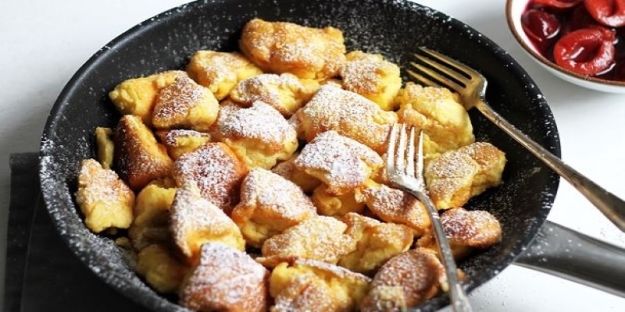
Slip into a church concert after the stalls close; Vienna and Salzburg publish nightly programs.
Try kaiserschmarrn (shredded pancake) hot off the pan with plum compote.
Handwarmer Pro Tip: Austrian huts sell “Punsch” in citrusy varieties (orange, apricot) in addition to classic Glühwein; gentler, aromatic, and just as warming.
This is where curated holiday market tours often shine: music-first experiences, choir rehearsals you can sit in on, and a pastry-making demo that explains why Austrian dough is so tender. The right tour doesn't rush; it lingers — exactly how Christmas market travel should feel.
France Balances Romance With Craft
Strasbourg calls itself the "Capital of Christmas," and you'll understand why when you see the cathedral square swell with light and timber stalls. Colmar looks painted — canals, crooked beams, quiet courtyards lined with garlands. Paris has multiple markets; the food is predictably excellent, but look closely for spice blends, dried orange garlands, beeswax candles, and felt ornaments that stand the test of time.
What To Ask A Vendor In Alsace:
- Bredele varieties (butter, anise, cinnamon, hazelnut) and which recipes are family-kept.
- Pain d’épices differences (some lean honey-forward, others ginger-forward).
- Vin chaud styles: Alsatian whites can lend a bright, floral quality to mulled wine.
Many holiday market tours emphasize “see everything.” The better ones help you edit. Two markets, done deeply — with a bakery stop and a chocolatier visit — beat five squares in a blur. Editing is the quiet skill of festive European travel.
Central & Eastern Europe: Understated And Incredibly Rewarding
Prague surrounds you with Gothic drama; the Old Town tree looks like it grew there, not placed. Cinnamon chimney cakes scent the air, and if you drift to the side streets, you’ll find stallholders carving marionettes or selling pressed tin ornaments. Budapest layers folk craft on top of design-forward stalls; at night, Basilica projections wash the facade with animated scenes. Kraków is generous — hearty food, heavy wool, amber, hand-painted glass — and prices feel less theatrical than in mega-famous markets.
Why these are strong for Christmas market travel: the conversations. Crafters often speak openly about materials, sourcing, and technique. If you’re the person who wants to know the “how,” this region welcomes your curiosity — one reason holiday market tours built around artisans are popular here.
Scandinavia: Small Scale, Big Feeling
The north doesn’t do excess lighting because the winter darkness does its own work. In Copenhagen’s Tivoli, rides glow like ribbons and spruce boughs roof every stall. Stockholm sells saffron buns (lussekatter) that taste of warm milk and sunlight you didn’t see. Helsinki elevates wool and wood; you’ll see forms that feel modern but rooted in Lapland.
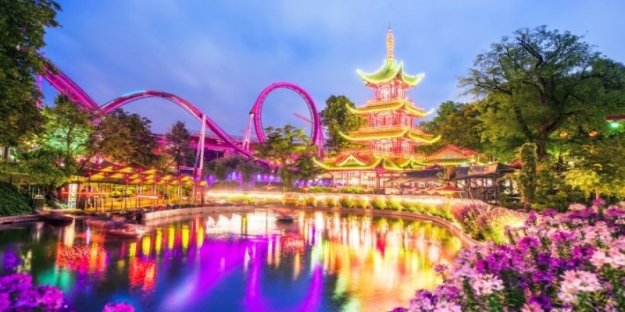
This is a sweet spot for festive European travel if you love minimalism, craftsmanship, and food that tells a climate story: smoked fish, cloudberry jam, rye pastries still warm. If your holiday market tours wish list includes “smaller, cozier, fewer crowds,” aim north.
The Activities That Make A Market Trip Memorable
Taste With Purpose
Treat the market like a tasting menu: one savory, one sweet, one drink per stop. In Germany, try Flammkuchen (Alsatian flatbread) blistered on the edges; in Austria, Langos (Hungarian fried dough) topped with garlic and cheese; in France, an oyster stand with lemon and baguette. Then compare regional mulled wines: German Glühwein (spiced first), Austrian Punsch (fruit-laced), Czech svařák (often stronger on cloves), and Hungarian forralt bor (red, sturdy, and relaxing).
Tip For Christmas Market Travel: many mugs are part of a deposit system. Keep your favorite; return the rest for a refund.
Make Something With Your Hands
Look for candle-dipping huts, gingerbread icing corners, wreath workshops, woodcarving demos, or ornament-painting tables. Some run on sign-up sheets posted that morning. These aren’t children-only; adults fill most seats. The object you made becomes the souvenir you treasure.
Seek Out Live Music And Folklore
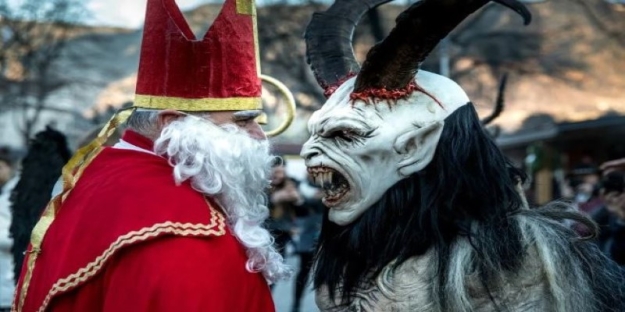
Choir schedules are often tucked near information booths. Stand still through one full set; that’s the rhythm reset many travelers miss. In Alpine towns, watch for Krampus runs (masks, bells, folklore), and in the Baltics, small ensembles playing zithers or fiddles. Cultural performance is where festive European travel stops being “shopping” and becomes “ritual.”
Night Photography Without Freezing
Carry a phone-capable glove, set the exposure down a touch for bright trees, and use stall roofs as makeshift tripods. Markets photograph best at blue hour — that fifteen-minute seam between day and dark — when lights bloom but skies still hold color.
How To Buy Well ?
Materials Tell The Truth
Wool should feel springy, not limp. Leather should smell like… leather. Wood should exhibit grain and tool marks, not a plastic-smooth lacquer finish.
Ask Provenance Questions
Where was it made? By whom? What wood? What dye? Vendors proud of “made here” will lean in. If you’re booking holiday market tours, ask operators whether they prioritize maker stalls over resellers — that one policy elevates an entire afternoon.
Know Your VAT Options
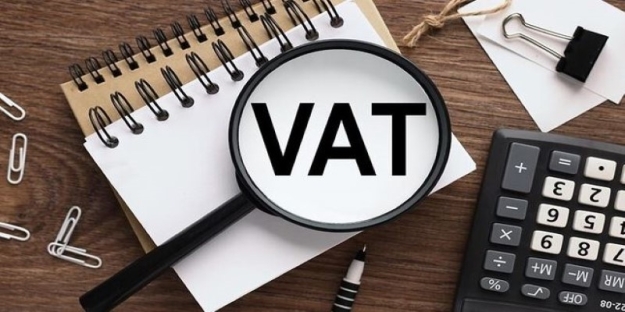
Non-EU shoppers often qualify for VAT refunds on eligible goods above a threshold. The European Union explains tax-free shopping rules.
Protect Textiles From The Elements
If you have purchased hand-felted wool or natural-dyed scarves, please keep them dry for now. Most markets sell simple waterproof tote sleeves; they're not fancy, but they prevent instant regret.
This is where Christmas market travel becomes smarter, not busier — buy fewer, buy better, understand the story.
Eating Safely, Happily, And Often
Food stalls in established markets are regulated, but “regulated” doesn’t mean “immune to winter reality.” A few minimums: warm food should be hot, not just “not cold”; sauces shouldn’t sit unheated in the snow; vendors wearing gloves for plating shouldn’t touch cash with those same gloves. Most places do this right; your eyes confirm the rest.
Allergy-wise, many huts now list allergens on boards; if they don't, ask. Central Europe's butter, nuts, poppy seeds, and eggs show up everywhere. When in doubt, stick to roasted nuts (ask about the glazing ingredients) and grilled items that you can see cooking through.
When holiday market tours include food tastings, they typically pre-vet stalls with strong hygiene practices. It’s an underrated perk of guided festive European travel.
When To Go, What To Expect?
Markets usually open late November and run through Christmas; some extend to December 30 or into early January (e.g., New Year’s markets) but expect many to pause or close on the 24th–26th. Weekdays are calmer. Late afternoons into early evening are prime: lights on, brass bands warming up, families arriving, steam rising off cups.
Winter is real. Plan for sub-freezing evenings, wind tunnels in medieval alleys, and snow or rain that arrives sideways. Dress like you’ll stand still for an hour — because you will — and enjoy it more.
Packing That Actually Works
- Outer layer with a chest pocket (for tickets, phone, lip balm, and handwarmer packets).
- Insulated boots with grippy soles (cobblestones + ice = drama).
- Neck gaiter (less fussy than long scarves in crowds).
- Touchscreen gloves (smart-photo tip: bring two pairs and alternate).
- Flat, zippered crossbody (front carry; pickpockets love market flow).
Heavy on warmth, light on bulk — the right kit extends your night by an hour, which is the difference between “we saw it” and “we experienced it.”
Money, Payments, And Little Frictions That Derail A Perfect Night
Card acceptance is widespread, but small cash is still useful at traditional stalls and for mug deposits. ATMs near big squares can run out of cash on weekend nights; grab it earlier in the day. Totes and mugs fill hands fast; bring a folding bag you can sling when you want both hands for a crepe (you will want both hands for a crepe).
If you’re shopping seriously, learn the tax-free routine before you go (again: EU VAT refund guidance). And if you’re booking via an operator, ask how they handle deposit mugs, transit between far-flung markets, and stall closure contingencies — good holiday market tours have solid answers.
Choosing A Tour
The filters that separate okay from excellent in Christmas market travel:
Maker Access Over Market Count
Ten stalls with real crafts beat a hundred with imported stock. Ask operators how they vet vendors.
Food That Teaches Something
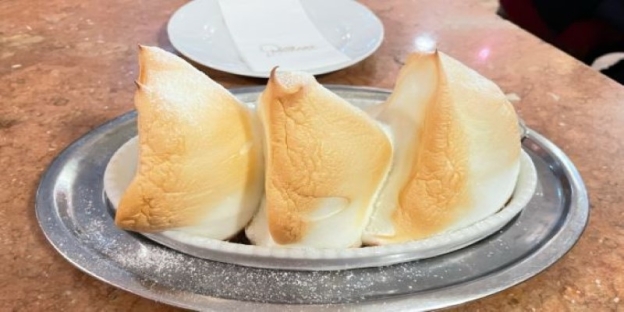
Tastings should show regional differences: Franconian vs. Thuringian sausages, Alsatian vs. Bavarian mulled wines, Salzburg dumplings vs. Viennese pastries. If your guide can't explain why, it’s unique, move on.
Off-Peak Timing Built-In
Strong tour structure visits around choir sets and blue hour for photos, not just “when the bus arrives.” Timing is half the magic in festive European travel.
Rights And Protections
In the EU, package travel has consumer protections (cancellations, significant changes, and solvency). Know them; they're designed to reduce risk for travelers booking holiday market tours.
Accessibility And Pacing
Cobblestones, crowds, and cold — all require breaks and alternate routes. If you need step-free options, ask explicitly which squares have ramped entries and where accessible restrooms are located; the best operators have maps readily available.
Story Over Checklist
The best holiday market tours have a thesis: “Alpine Advent food traditions,” “Vienna’s music-led markets,” “Craft lineages in the Ore Mountains.” A clear lens makes every stop feel intentional.
Family-Friendly Moves
- Workshop Seats: many markets have early slots where kids can decorate gingerbread or dip candles; these set a calming tone and earn you adult browsing time later.
- Skate First, Wander Later: burning energy upfront makes stalls more enjoyable for everyone.
- Mug Math: let each child pick one design to keep; return the rest for deposit refunds.
- Quiet Corners: museum courtyards and church steps are sanity-saving breathers near otherwise busy squares.
This is where family-focused Christmas market travel thrives: build small anchors, keep the rest flexible.
How To Read A Stall?
You’ve got fifty stalls and a warming drink cooling by the minute. Learn to scan:
Cut, finish, and price tell most of the story. Scissors marks on paper stars? Fine — handmade. Suspiciously uniform “hand-carved” pieces at chain-store prices? Probably not local. Wool with lanolin scent and bounce? Likely good. Flat, lifeless knit? Pass.
Ask one material question ("What wood is this?" "Which wool?"), Then one process question ("How is it dyed?" "How long to make?"). Genuine makers shine; resellers falter. That's a useful sort for holiday market tours that promise "authentic crafts."
Sustainability, Without Dreariness
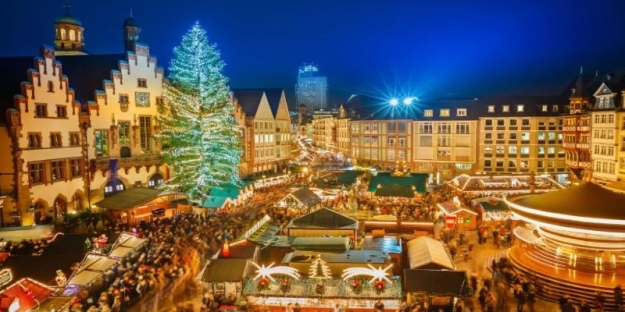
It’s easy to get preachy here; let’s not. Simply: buy things that last, eat what you can finish, return mugs you won’t keep, and carry a tiny trash bag for peels and napkins when bins overflow at peak hours. Many operators quietly build in lower-waste choices (reusable tasting trays, water stations); if sustainability matters to you, ask. Good festive European travel can be gentle on the places we love.
The “Crowd Skill” Most Travelers Forget
Markets pulse. Let them carry you — to a choir you didn’t plan to hear, to a wreath you didn’t expect to love, to a corner where a grandmother is hand-rolling dough and telling stories. Stand still for five minutes at the top of each hour and just… absorb. Your brain files more memories when you anchor the night with pauses. It’s the simplest upgrade to Christmas market travel there is.
Why Numbers Help You Decide?
For those who appreciate context, industry data helps frame the scale of winter travel and market popularity across Europe. For high-level trends on seasonal spending and visitor flows, Statista maintains accessible, data-forward topic pages you can explore when planning. And if you want editorial roundups to pair with your own research, Forbes regularly compiles lists that can help you shortlist cities before you dig deeper.
Numbers won’t choose for you. But they can validate what you feel: that festive European travel is more than nostalgia — it's a major, well-supported part of the continent's winter economy. It continues to grow because it delivers on joy.
Comfort And Safety, Without Anxiety
Markets are well-patrolled, lively, and family-forward. The common-sense checklist: keep your phone zipped and front-carried; hold bags in front in dense crowds; choose ATMs in daylight; and step off-center to read your map or message. Suppose the cobbles ice over, the fastest fall prevention is to take slow steps and use rails when available. Drink mulled wine like you're tasting, not hydrating.
On holiday market tours, guides usually flag the local "meet-back" point in case you get separated and track stall clusters so that no one gets lost in the crowd.
The River Cruise Question
No itinerary here; just the truth that floating from one lit-up city to the next — warm dinner, quiet cabin, next morning’s market five minutes from the gangway — feels like a winter lullaby. Shore time becomes purposeful (short, focused market walks; museum hour; back for choir). For travelers who prefer their Christmas market experience wrapped in comfort, riverboats provide the softest edges to cold nights.
Apply the same filters to cruise-led holiday market tours that you would on land: maker access, timing, pacing, and substance.
A Note On Rights
Suppose you book combined transport, hotels, and experiences in the EU. In that case, you're likely covered by the Package Travel Directive, which sets rules for refunds, significant changes, and operator insolvency — exactly the kind of behind-the-scenes stuff that protects holiday market tours when weather or strikes interfere. It’s not romantic; it is useful.
Markets After Christmas
Some cities pivot to New Year’s stalls with a slightly different energy — fewer ornaments, more food, fewer families, more night owls. If your dates push late, you’ll find shorter lines, lower prices on seasonal stock, and a gentler hum. It’s still festive European travel, just with more room to breathe.
The Joy In Editing
With hundreds of markets in play, restraint is your friend. Choose three things to savor each night (one music, one food, one craft story), and you’ll remember more than you would speed-walking seven squares. Editing isn’t limiting; it’s how Christmas market travel becomes yours.
Why You’ll Go Back
Because you missed the choir you heard from a distance. Because you bought the wrong wool hat and now you know how to spot the right one. Because you've started to tell the difference between cinnamon-heavy and clove-heavy mulled wine, because you'll remember standing under a sky of lights and feeling — briefly, completely — unhurried.
Festive European travel works like that: it leaves a thread you want to pick up next year, and the year after that.
Make Your Market Season Count
You don’t need an itinerary. You need a point of view: fewer places, deeper time, better questions, warmer shoes, and a little appetite left for one last pastry. That’s the whole trick of holiday market tours that feel personal, and the quiet genius of Christmas market travel at its coziest. Here’s to your next chapter of festive European travel — brighter, slower, and entirely yours.
Was this helpful? Share your thoughts
- Learned practical methods
- Solved my questions
- Inspired new ideas
-
![Unlock Europe on a Budget: 10 Cheapest European Cities to Fly Into]() Unlock Europe on a Budget: 10 Cheapest European Cities to Fly Into
Unlock Europe on a Budget: 10 Cheapest European Cities to Fly Into -
Dreaming of cobblestone streets and historic capitals but dreading the airfare? We get it. The cost of a flight can feel like the biggest hurdle to your European adventure. But what if choosing the right destination could save you hundreds? Let's discover the cheapest European cities to fly into.
Explore More
-
![Affordable Family Vacation Packages That Kids Will Love]() Affordable Family Vacation Packages That Kids Will Love
Affordable Family Vacation Packages That Kids Will Love -
You do not need to empty your savings account to plan the ideal family vacation. The smart families understand that the right family vacation packages can either be a nightmare journey or a fairy tale. A lot of people have indicated that one of the biggest issues they have is the cost of travelling, and affordable options have become more important than ever.
Explore More
